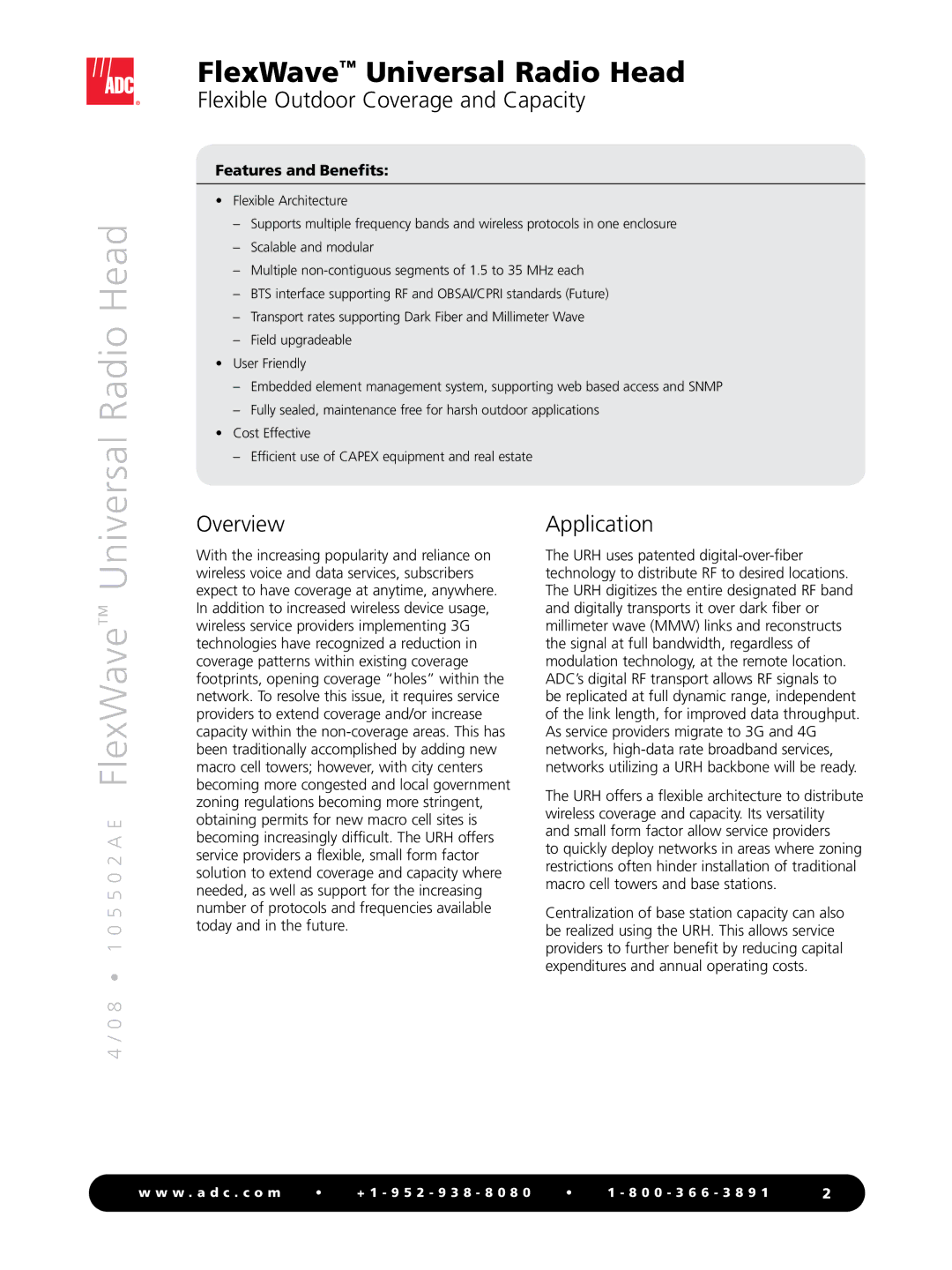FlexWave specifications
ADC FlexWave is a cutting-edge solution in the realm of wireless communication, catering specifically to the burgeoning demand for enhanced connectivity. This state-of-the-art system is designed to optimize the performance and efficiency of wireless networks, making it a pivotal asset for modern telecommunications.One of the hallmark features of the ADC FlexWave is its advanced distributed antenna system (DAS). This technology is critical in extending wireless coverage to areas that are typically challenging to reach, such as large buildings, stadiums, and urban environments. The DAS architecture employs a network of antennas strategically located throughout a venue, ensuring that users experience seamless connectivity regardless of their location. This is particularly beneficial in high-density environments where the demand for bandwidth can quickly exceed the available capacity of traditional cellular networks.
Another significant characteristic of the ADC FlexWave is its scalability. The system is designed to grow with the needs of an organization. As demand for bandwidth increases, additional antennas and capacity can be integrated with minimal disruption to existing operations. This flexibility is essential for businesses that anticipate growth or for venues hosting large events, where wireless requirements can fluctuate dramatically.
In terms of technology, the ADC FlexWave leverages advanced signal processing algorithms that enhance the quality and reliability of wireless signals. This technology ensures that users experience fewer dropped calls and improved data rates, which translates to a more satisfying user experience. Furthermore, the system is equipped with real-time monitoring capabilities, allowing operators to detect and address issues quickly before they affect users.
The ADC FlexWave is also compatible with various cellular technologies, including LTE and 5G, ensuring that it can support the latest advancements in mobile connectivity. This multi-technology support not only future-proof the investment but also enables organizations to deliver high-speed Internet and voice services to their users, irrespective of the device or technology they are utilizing.
In summary, the ADC FlexWave stands out as a versatile and reliable solution for enhancing wireless communication. Its advanced DAS architecture, scalability, cutting-edge signal processing, and compatibility with multiple technologies make it an essential tool for any organization looking to improve connectivity and user satisfaction in an increasingly wireless world. With the ADC FlexWave, companies can rise to the challenges of modern wireless communications, ensuring they remain competitive in a fast-evolving market.

